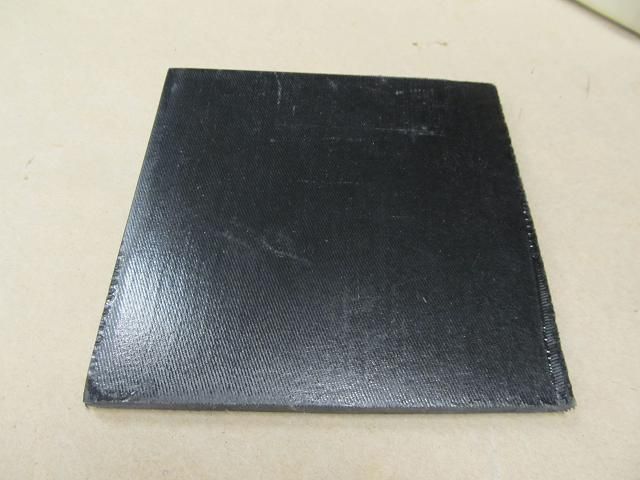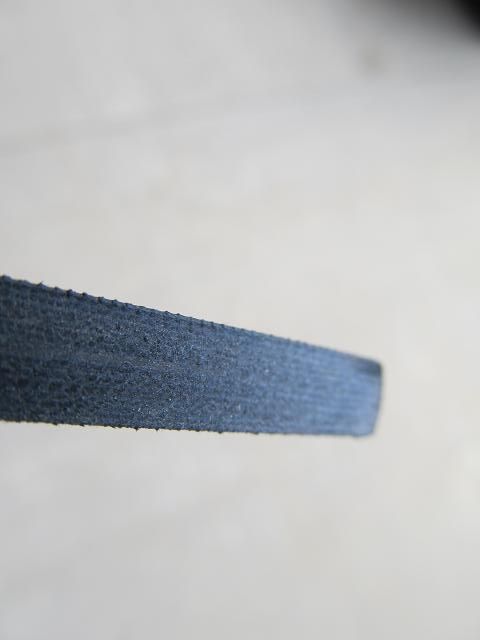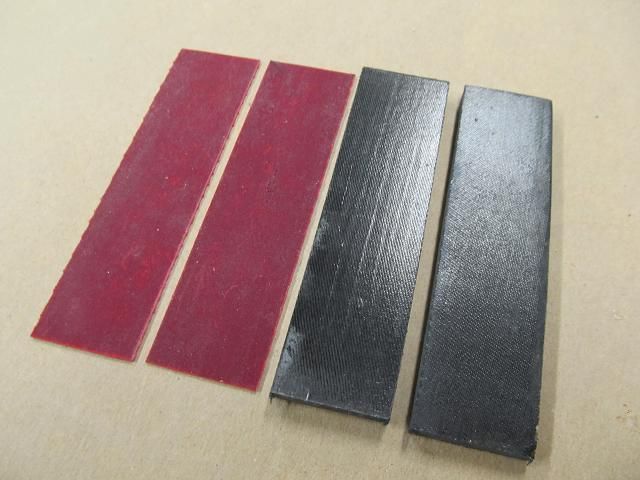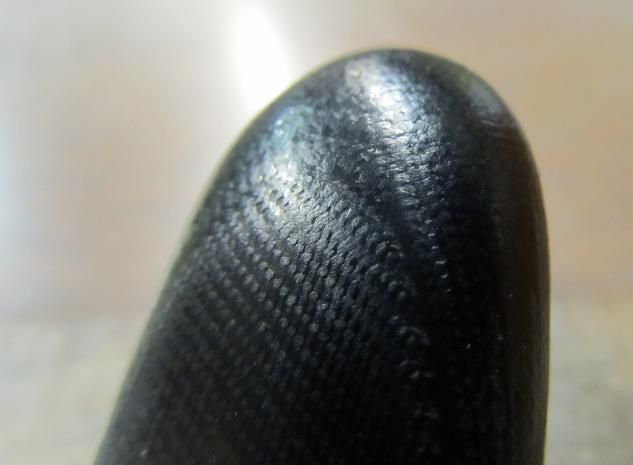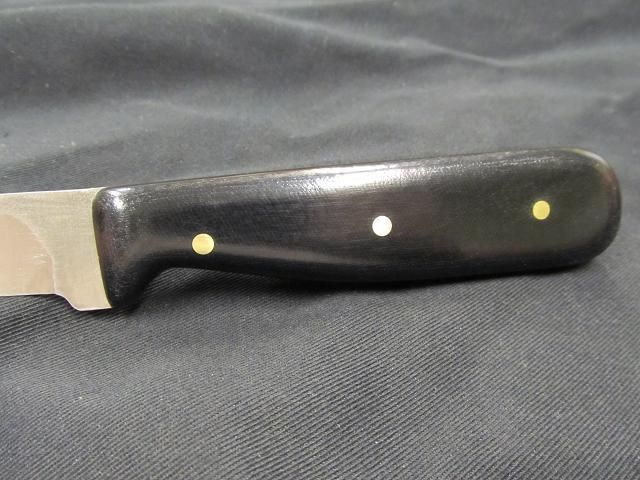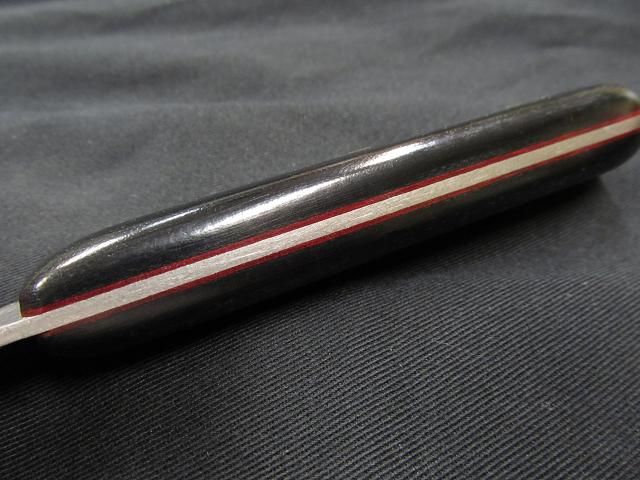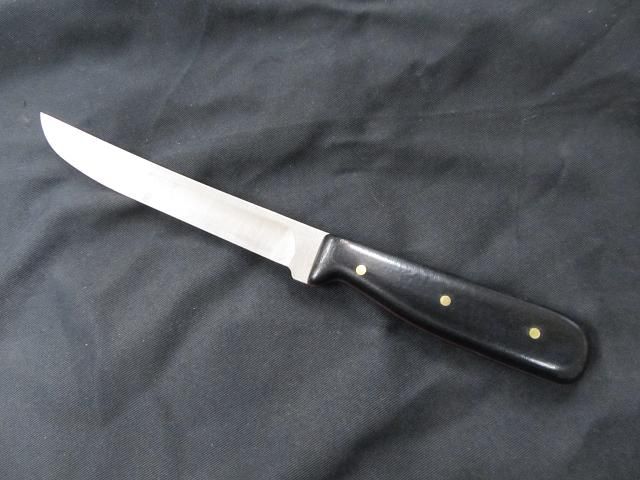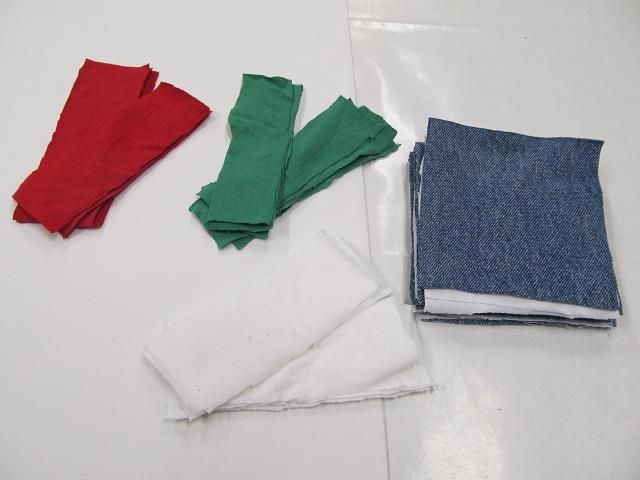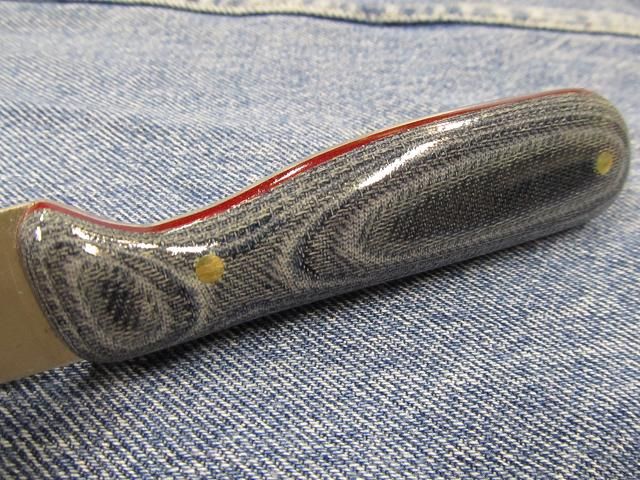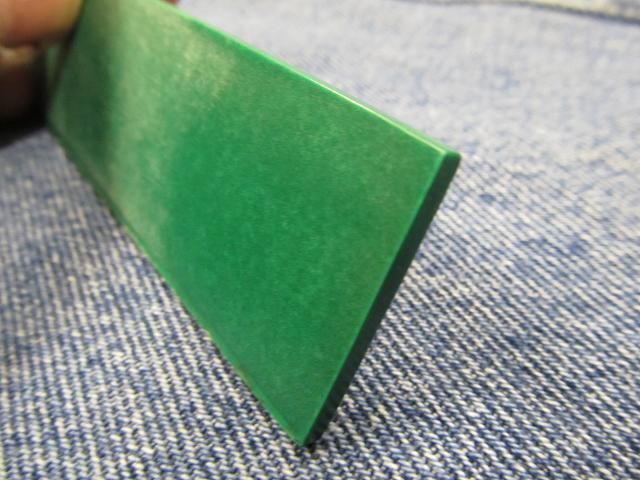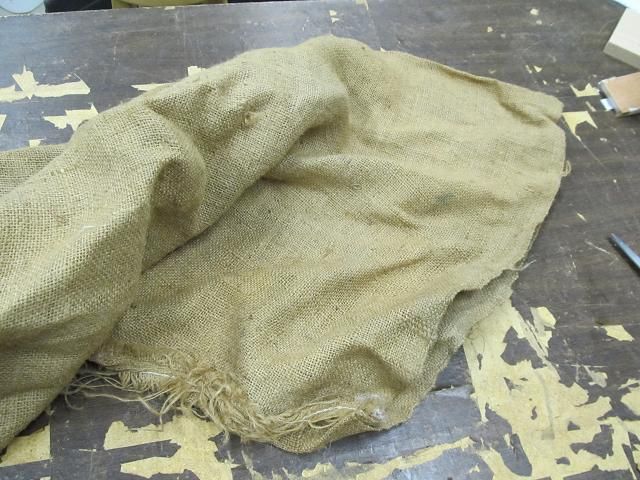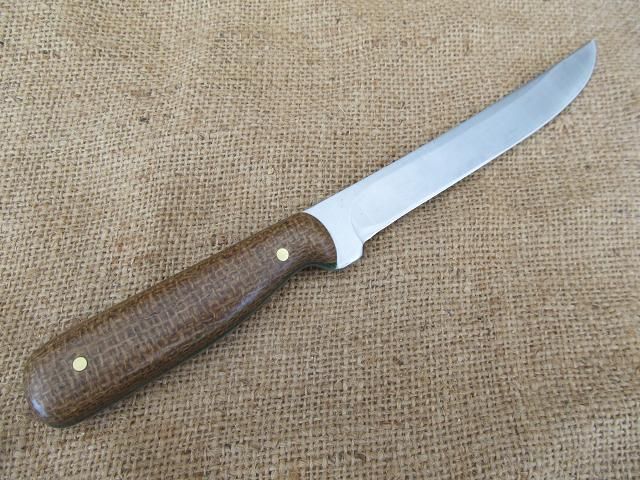- Banned
- #1
Sharp Things
Lil-Rokslider
This is how I make a resin knife handle. This is commonly done with carbon fiber and fiberglass but I've also seen it done with denim and other materials. I've seen others do this with some pretty interesting results. You can fabricate a variety of handles or grips using this method.
For this kitchen knife I want a black handle and red handle so I’m making it out of an old pair of black dress pant that had a busted zipper and an old red T-shirt. I cut squares that were 4 ½ by 4 ½ so that I can get a matched set of handle scales.
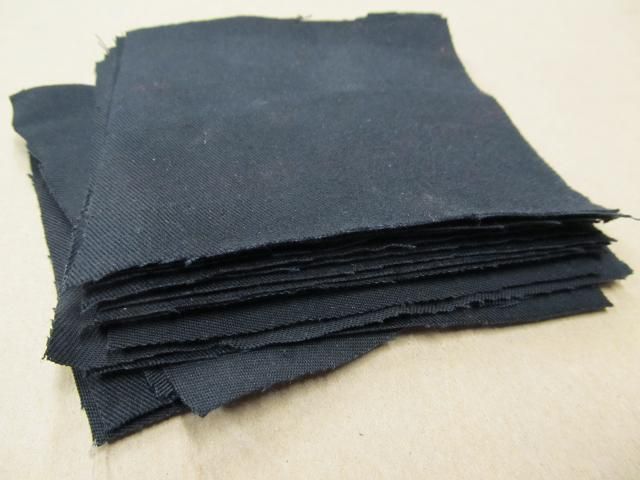
This was messy work so rubber gloves are a must .
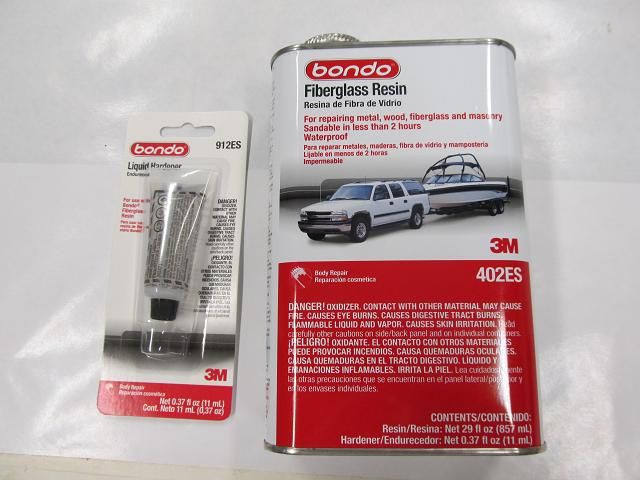
I used a plastic bin to coat each square and a squeegee to spread and saturate the cloth.
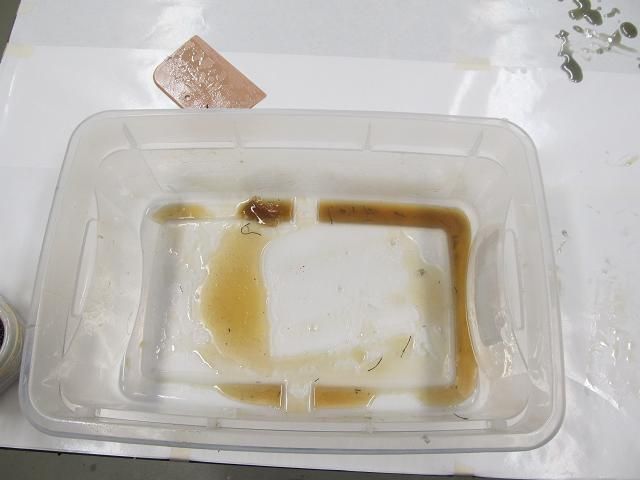
I would be clamping the stack between two wood slabs. I cut apart a large Ziploc bag and taped it to the blocks to keep them from sticking to the fabric squares.
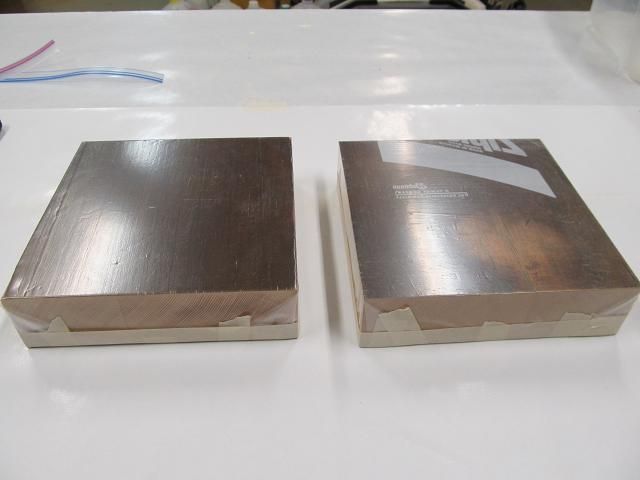
16 layers thick. Notice how the Ziploc bag material is no longer smooth and tightly stretch over the block. This stuff gets really hot. I could not hold the mixing container due to the heat.
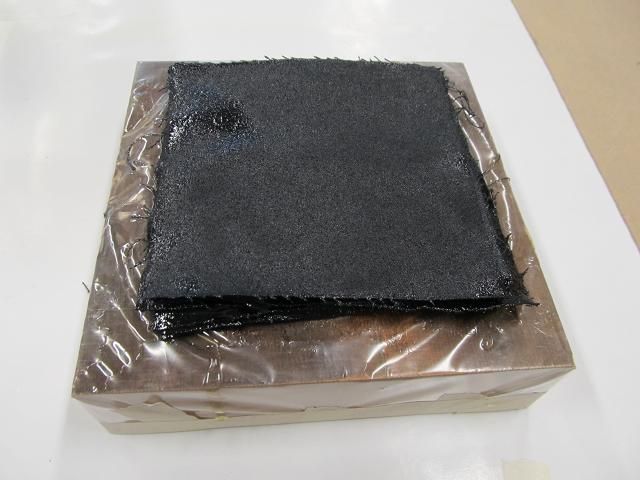
Then I clamped them together as tightly as I could. I also made a set of thinner pieces out of a red T-shirt. I will use them for spacers. They are only 2 layers thick.
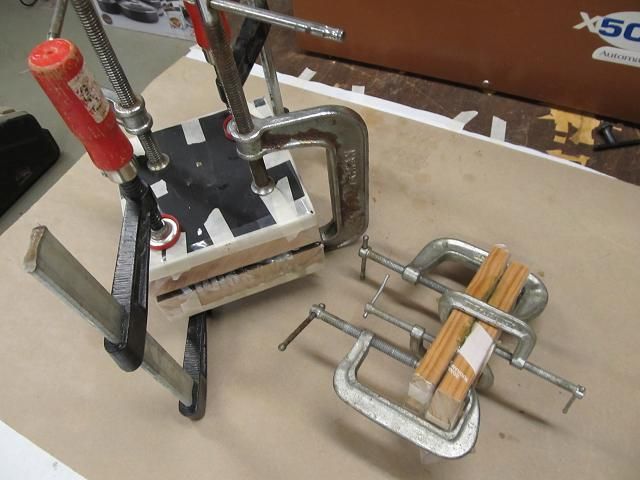
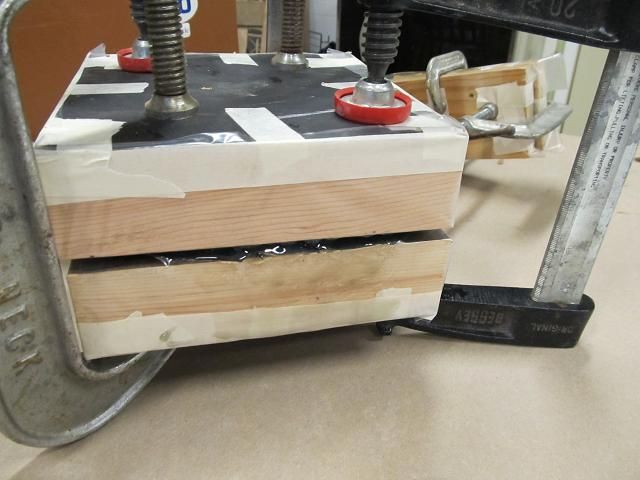
I let them set for 24 hours even though the container said it would be cured in 2 ½ .
After prying the blocks apart.
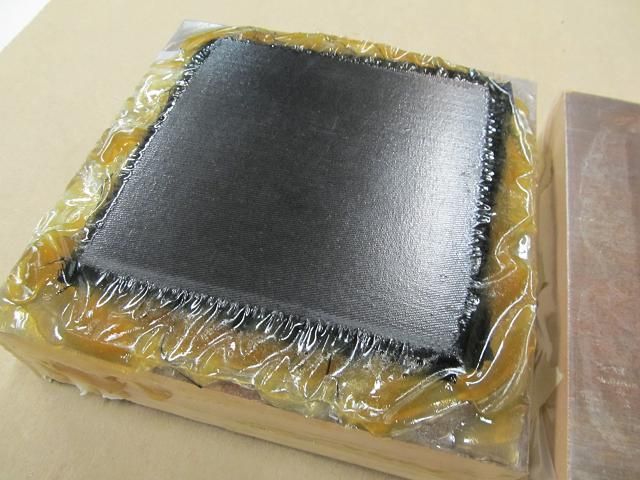
For this kitchen knife I want a black handle and red handle so I’m making it out of an old pair of black dress pant that had a busted zipper and an old red T-shirt. I cut squares that were 4 ½ by 4 ½ so that I can get a matched set of handle scales.

This was messy work so rubber gloves are a must .

I used a plastic bin to coat each square and a squeegee to spread and saturate the cloth.

I would be clamping the stack between two wood slabs. I cut apart a large Ziploc bag and taped it to the blocks to keep them from sticking to the fabric squares.

16 layers thick. Notice how the Ziploc bag material is no longer smooth and tightly stretch over the block. This stuff gets really hot. I could not hold the mixing container due to the heat.

Then I clamped them together as tightly as I could. I also made a set of thinner pieces out of a red T-shirt. I will use them for spacers. They are only 2 layers thick.


I let them set for 24 hours even though the container said it would be cured in 2 ½ .
After prying the blocks apart.


